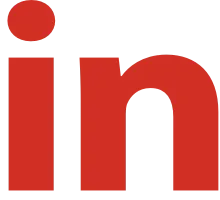The Future Is Faster Than You Think Snippet: Cyborgs ain't that far
I’ve got a snippet from my book, The Future Is Faster Than You Think.
If you’ve already read it, great.
Take this piece as a timely reminder of the light at the end of the tunnel.
Let’s go…
Until recently, most genius was squandered.
Even if you were born with incredible talents, the chances of you being able to use those abilities were limited at best.
Gender, class, and culture mattered.
If you weren’t born wealthy and male, your chances of getting more than a third-grade education were slim to none.
And even if you did manage to get enough education to unlock your talent, being recognized for that talent, being able to use it to make a difference was no simple feat.
While IQ isn’t the only metric for genius, the standard distribution of the Stanford-Binet scale shows that only 1 percent of the population qualifies.
Technically, this makes for 75 million geniuses in the world.
But how many of them actually get to make an impact?
Until recently, not that many.
One of the by-products of our hyper-connected world is that these extraordinary individuals will no longer be casualties of class, country, or culture.
We don’t tend to think about opportunity costs surrounding lost brilliance, but they’re arguably substantial.
Yet, thanks to our increasing interconnectivity and the exponential explosion of networks, all of these barriers to discovering genius are starting to fall.
The results will be more breakthrough ideas, faster innovation, and greater acceleration.
And this is only half of the story.
While genius may be a rare phenomenon, we are starting to understand its underlying neurobiology.
There are two major strains to this work, a near-term and a far-term approach.
In the near term, research into what might be called “the neurological basis for innovation”—that is, creativity, learning, motivation, and the state of consciousness known as flow—have allowed us to amplify these critical skills like never before.
Consider the nine-dot problem, a classic test of creative problem-solving.
Connect nine dots with four lines in ten minutes without lifting your pencil from the paper.
Under normal circumstances, fewer than 5 percent of the population can pull this off.
In a study run at the University of Sydney in Australia, none of their test subjects did.
But then the researchers took a second group of subjects and used transcranial direct stimulation to artificially mimic many of the changes produced during flow.
What happened? Forty percent solved the problem—a record result.
The long-term approach takes a similar tack, using technology to improve cognitive function, only soon the technology will be permanently implanted in our brains.
Entrepreneurs such as Elon Musk, who started a company called Neuralink, and Braintree co-founder Bryan Johnson, who founded Kernel, alongside established companies like Facebook, have been pouring hundreds of millions of dollars into next-generation brain implants.
The implants have been dubbed “neuro-prosthetics” or “brain-computer interfaces,” and the goal, as Johnson explains, “is not about AI versus human. Rather, it’s about creating HI, or ‘human intelligence,’ the merger of humans and AI.
Everybody agrees that Cyborg Nation is still a long ways off, but progress is moving faster than many suspect.
We already have brain-computer interfaces that can help stroke victims regain control over paralyzed limbs, and others that help quadriplegics use computers simply by thinking.
Sensory replacement devices are already here (think cochlear implants), and full-scale visual prosthetics—that final horizon—are coming this decade.
Memory is the latest frontier.
In 2017, USC neuroscientist Dong Song borrowed the seizure-control neural implants used by epilepsy patients.
By repurposing them to stimulate the neuronal circuits involved in learning and retention, Song produced a 30 percent boost in memory.
In the near term, this is a new treatment for Alzheimer’s; in the long run, it’s brain-enhancement for everyone.
Ray Kurzweil famously pegged the development of the full cyborg to the middle 2030s.
Kurzweil’s averaging an 86 percent success rate for his predictions, but even if he’s off by a decade, with the progress we’re already seeing in everything from networks to neuroscience the end result is more genius, more breakthroughs, and more acceleration.
P.S. If you’d like to harness the full power of flow and unlock your genius, consider applying for Zero to Dangerous, our peak performance training. We’ve got three or four open spots before our coaches are fully booked.
——> Apply For Zero to Dangerous Here Now





